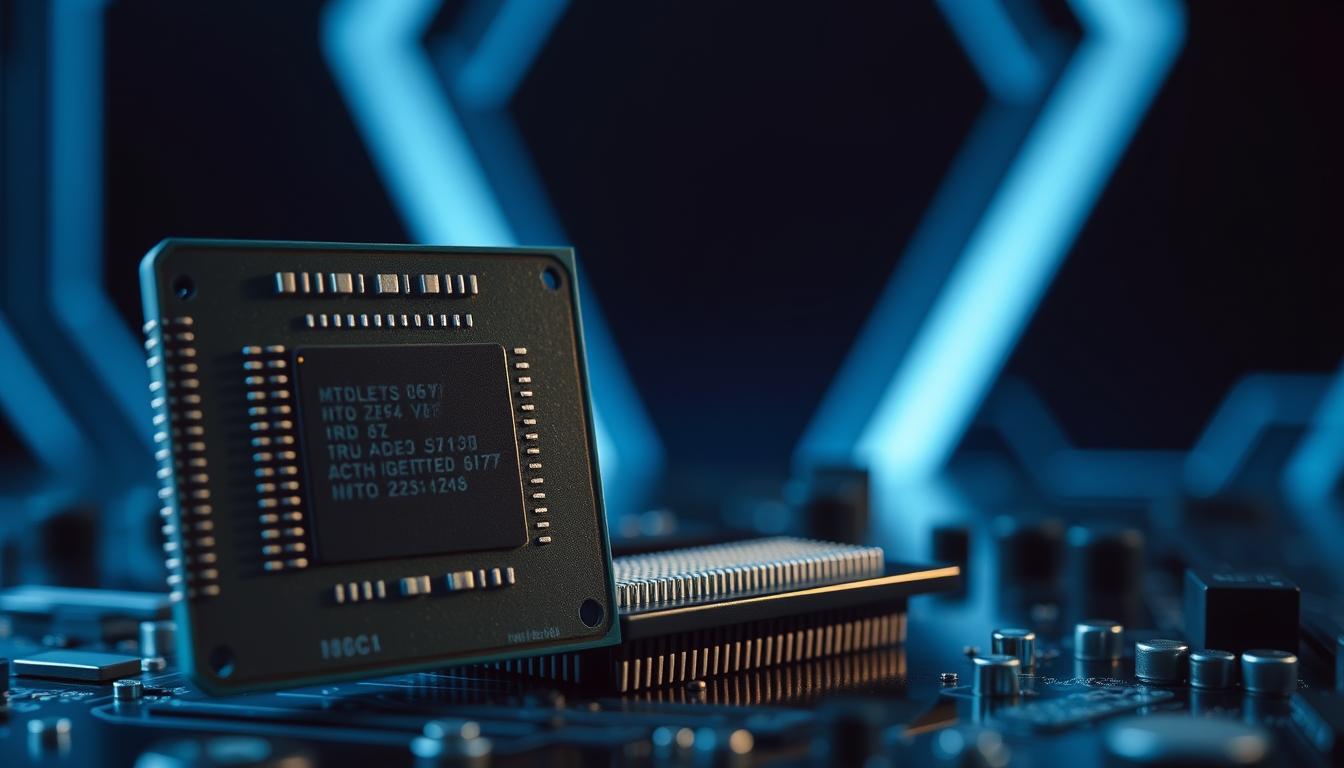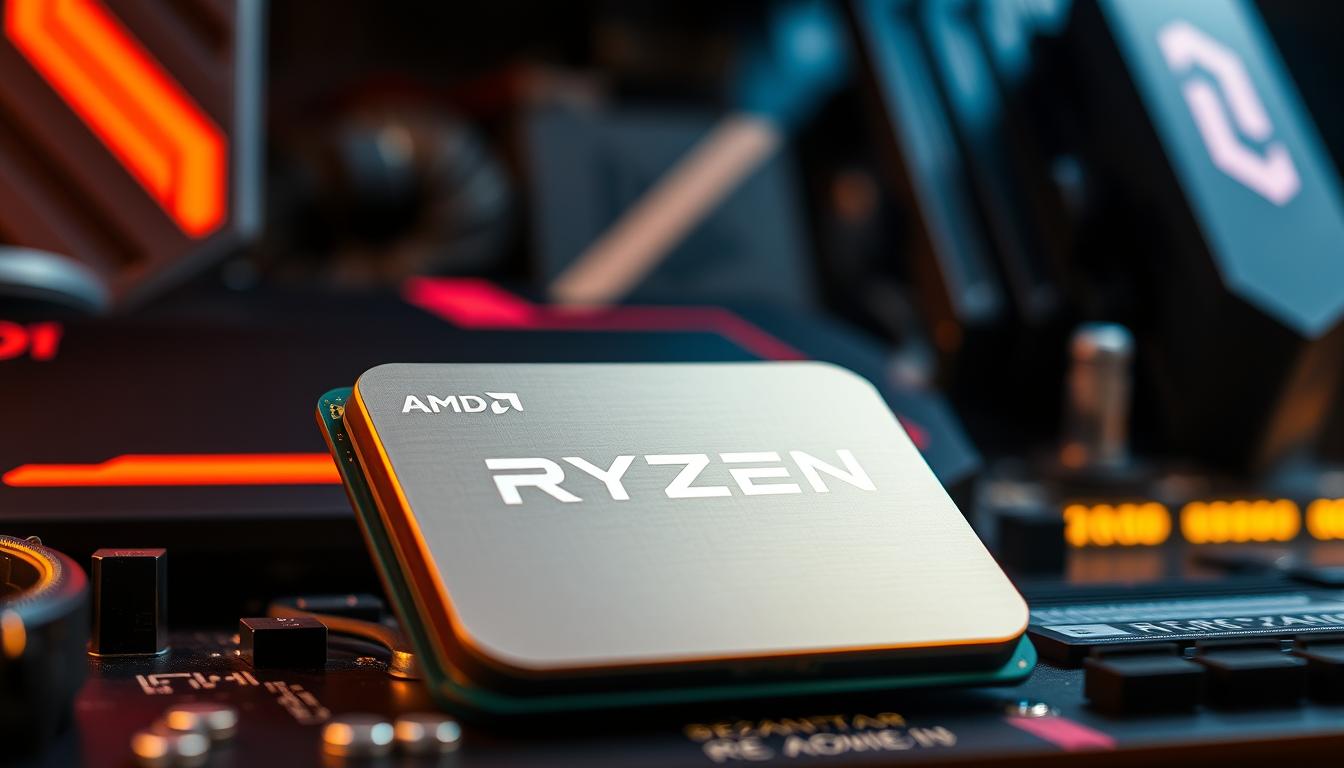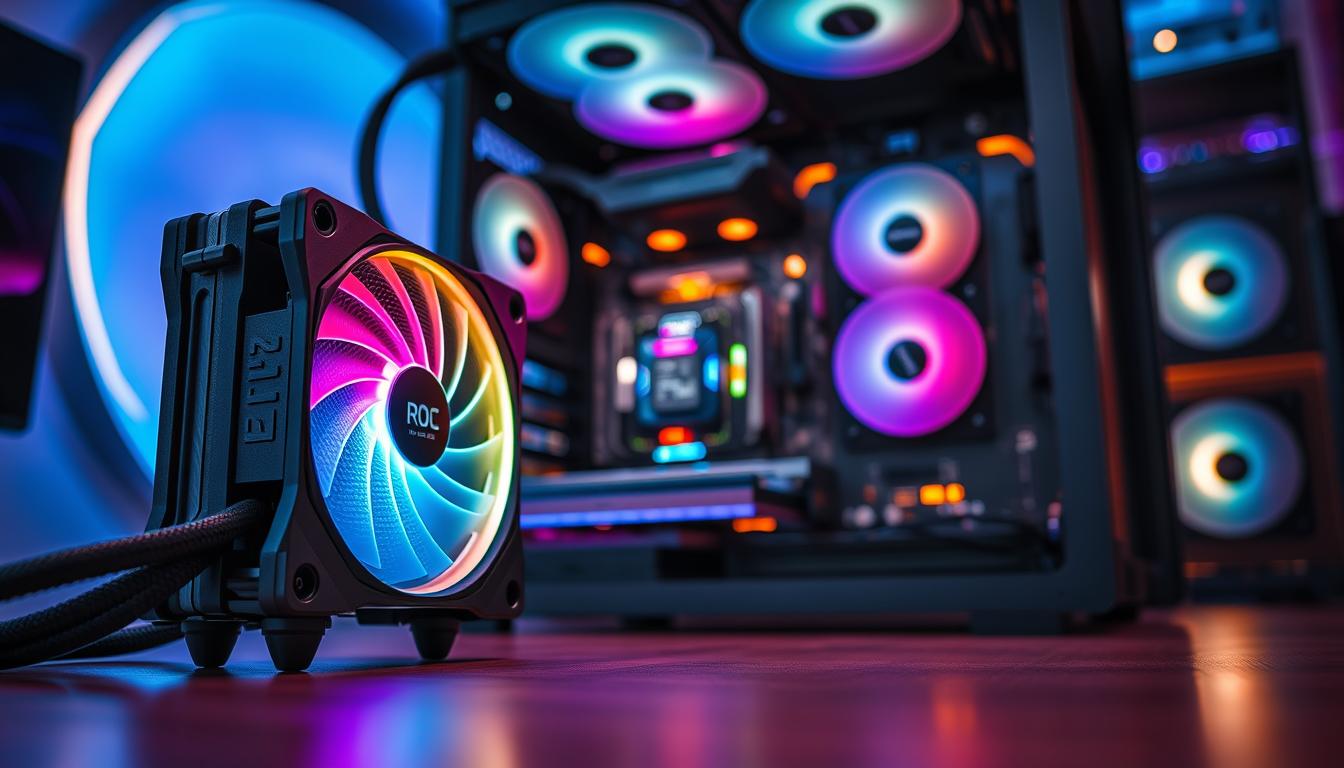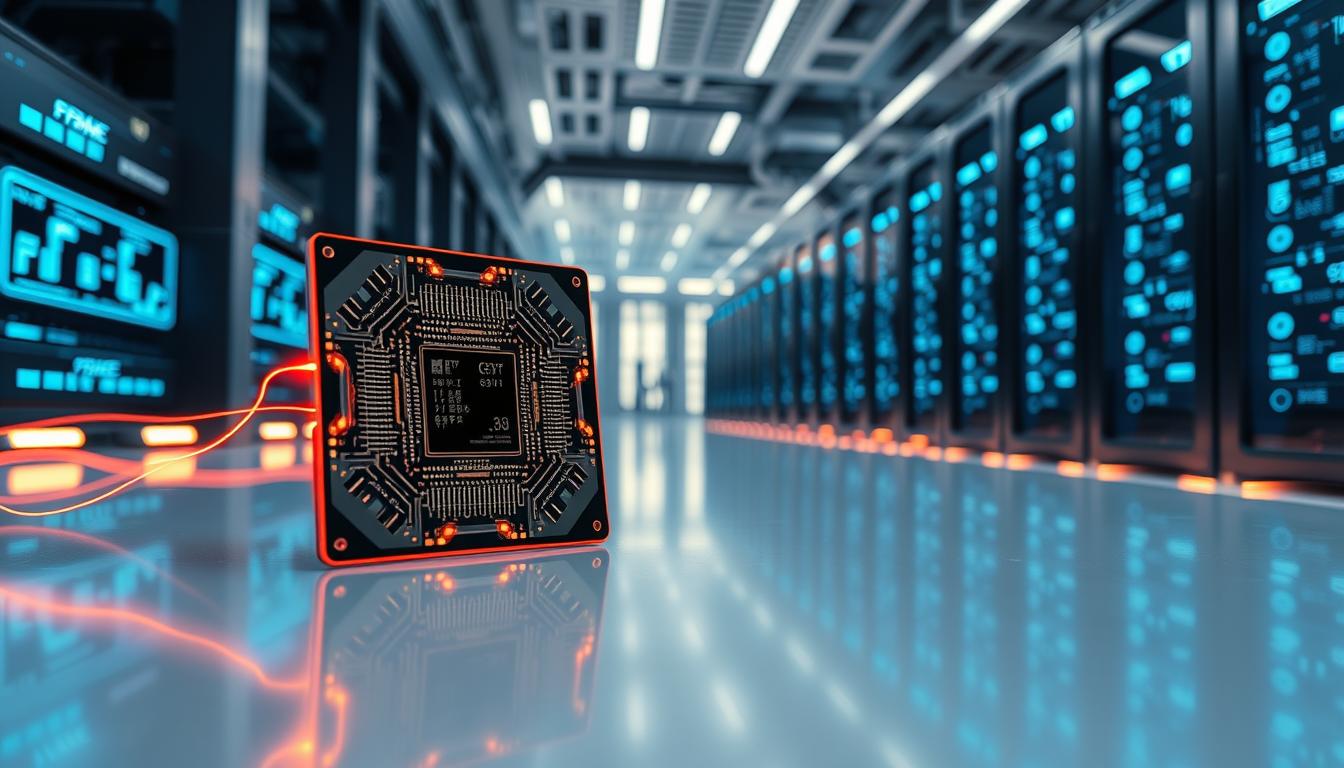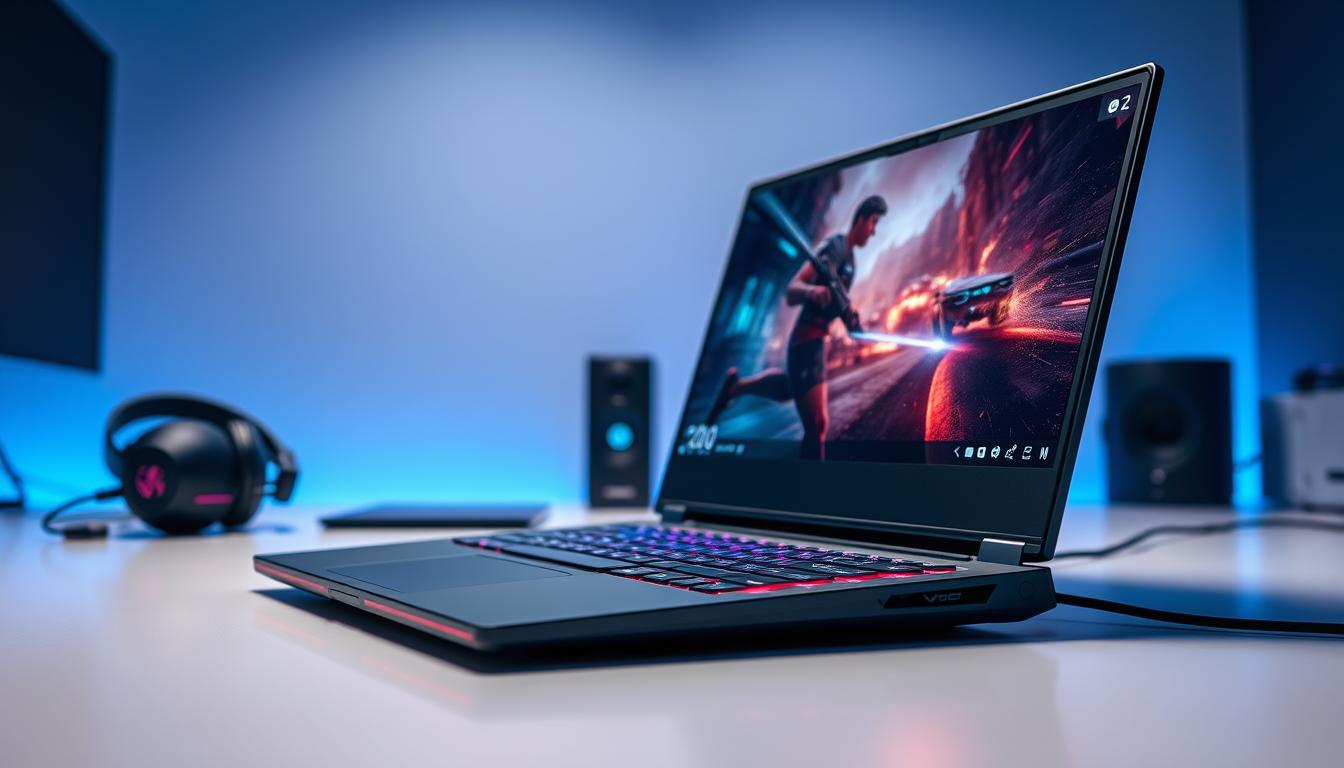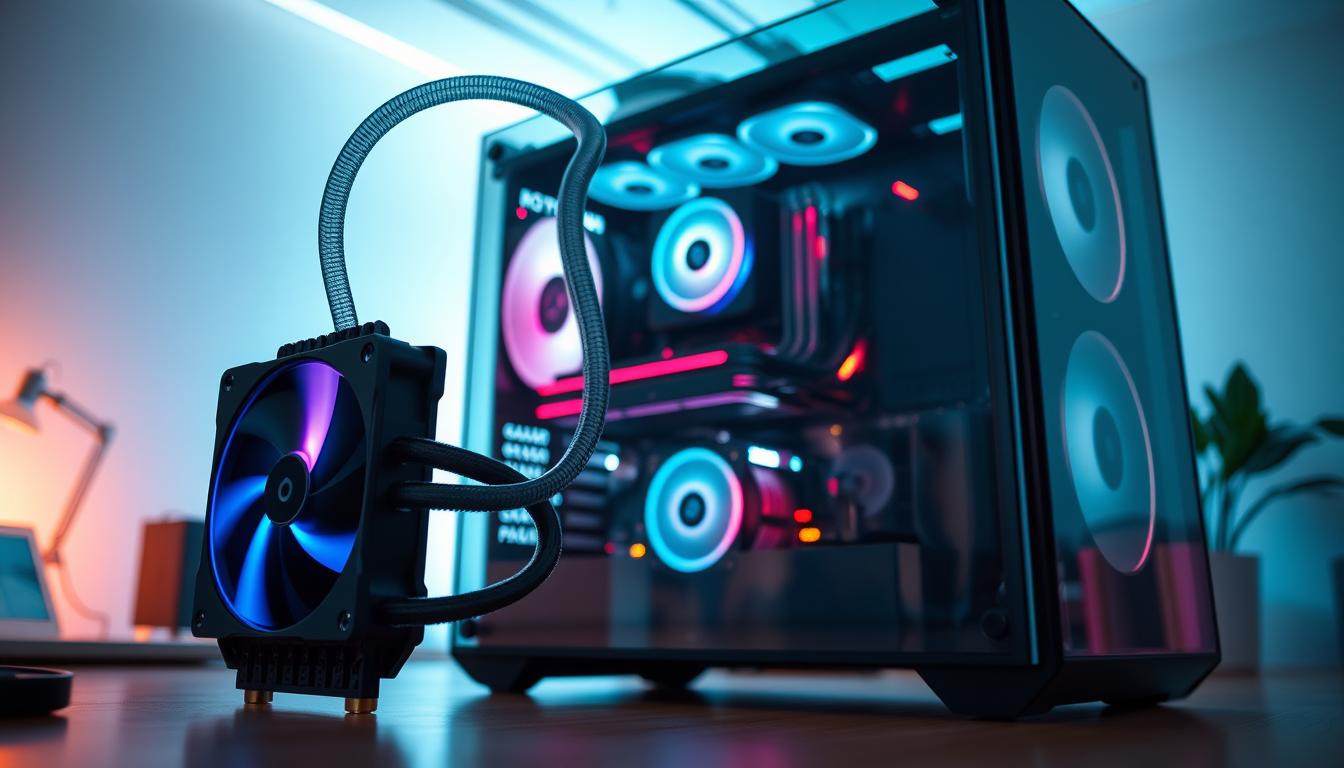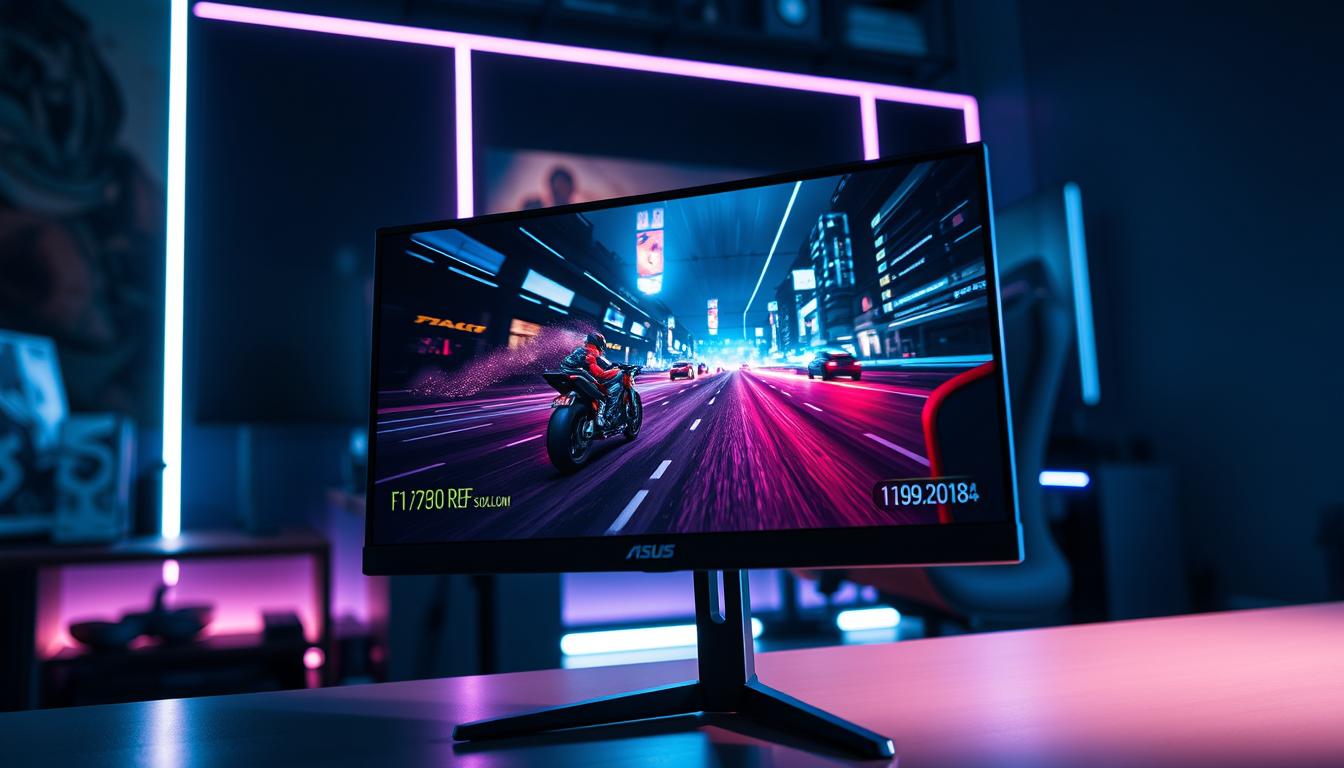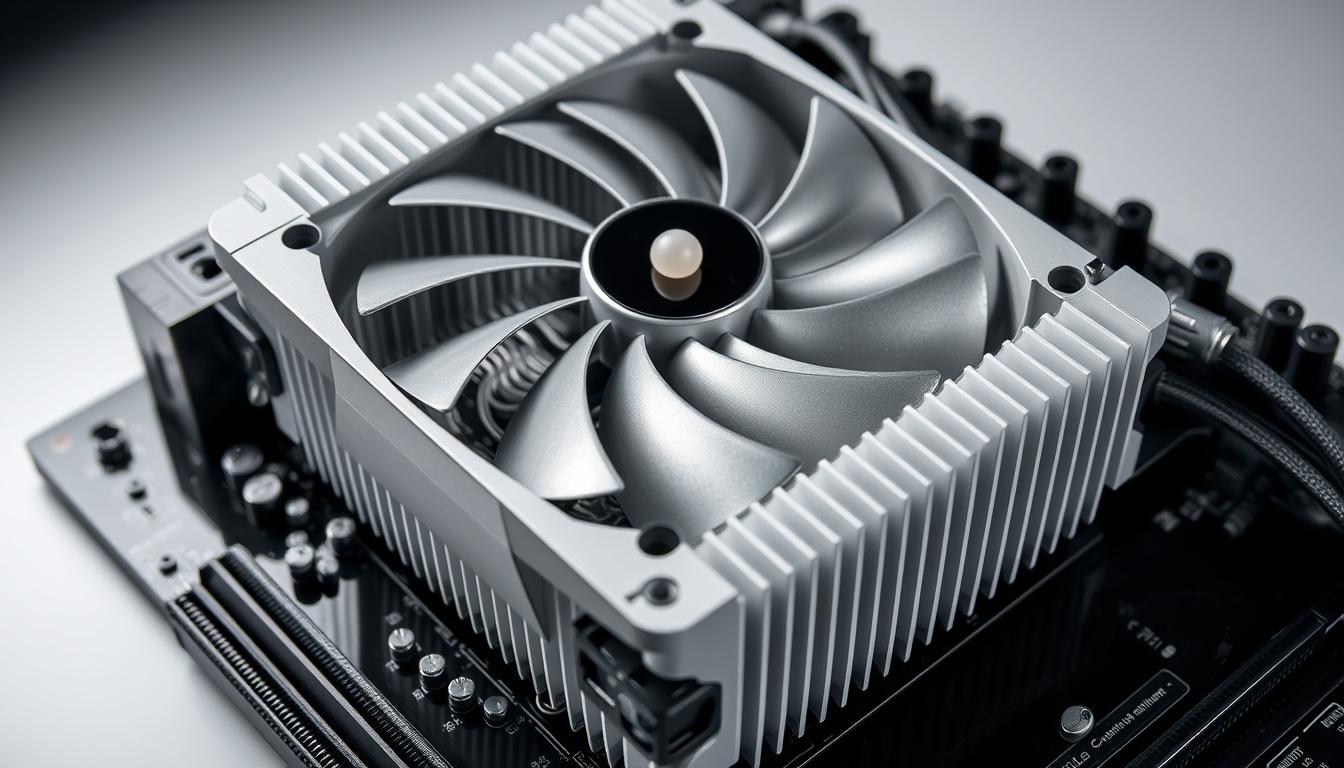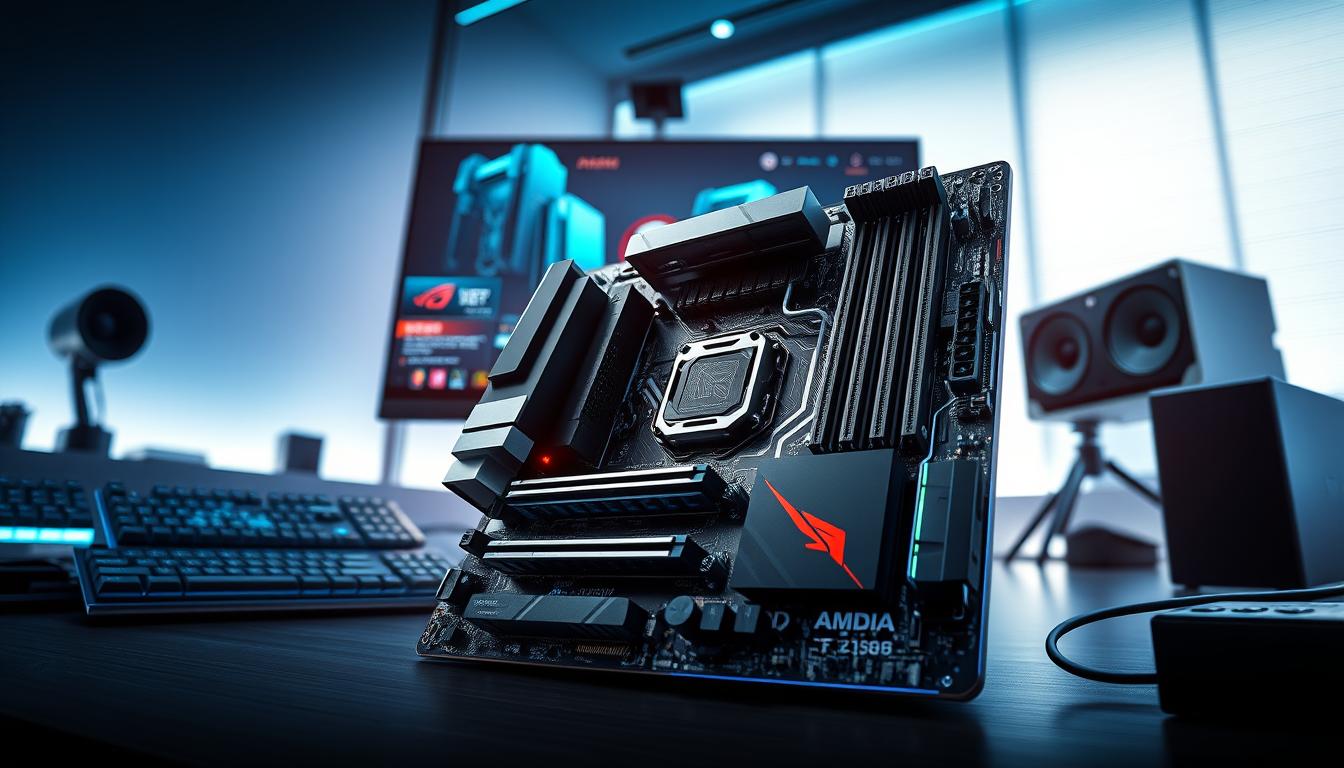Did you know that improper cooling can reduce your CPU’s lifespan by up to 50%? Maintaining optimal temperatures is critical for any high-performance system, whether you’re gaming, editing, or running intensive applications. A reliable cpu cooler ensures your hardware operates efficiently, even under heavy loads1.
Modern systems demand advanced cooling solutions to handle the heat generated by powerful processors. From air coolers to liquid cooling systems, the right choice can significantly impact performance and longevity. For instance, the Noctua NH-D15, a top-tier air cooler, competes closely with custom water cooling solutions under full loads1.
When selecting a cpu cooler, factors like noise levels, build quality, and compatibility are crucial. High-end options, such as the NZXT Kraken Elite 360 RGB, deliver exceptional cooling efficiency, making them ideal for demanding setups1. Investing in the right cooler ensures your system stays cool and performs at its peak.
Overview of PC Cooling Solutions
The battle between air and liquid cooling has been a long-standing debate among tech enthusiasts. Both solutions aim to manage heat effectively, but they differ in performance, installation, and cost. Understanding these differences is key to choosing the right system for your needs.
Air Cooling vs. Liquid Cooling
An air cooler is often more affordable and easier to install, making it a popular choice for budget-conscious builders. It relies on heat sinks and fans to dissipate heat, requiring minimal maintenance2. However, it can be bulkier and noisier compared to liquid alternatives.
On the other hand, a liquid cooler excels in heat dissipation, often outperforming air cooling by 2-10 times2. AIO (all-in-one) systems are user-friendly, with installation taking around 30 minutes, while custom loops demand more expertise and time2. Liquid systems are also quieter and offer more aesthetic flexibility.
Understanding Cooling Performance Metrics
Performance metrics like thermal efficiency, noise levels, and installation complexity are critical when evaluating cooling solutions. For instance, the Thermalright Frozen Prism maintains a temperature of 49.7°C over ambient at a 200W load, showcasing its efficiency3.
Noise levels also play a significant role. The Arctic Liquid Freezer III operates at 39.8 dBA, making it one of the quietest options available3. When considering cost, air cooling systems are generally more budget-friendly, while liquid cooling offers superior performance at a higher price point2.
For those exploring upgrades, the Nvidia RTX 4060 Ti pairs well with efficient cooling solutions, ensuring optimal performance during intense gaming sessions.
Understanding CPU Cooler Fundamentals
The core of any high-performance system lies in its ability to manage heat efficiently. A cpu cooler plays a vital role in maintaining system stability by dissipating excess heat generated during operation. Without proper cooling, a cpu can overheat, leading to throttling, reduced lifespan, or even permanent damage4.
At the heart of every cpu cooler is the fan, which circulates air to remove heat from the processor. Fans come in various designs, including axial and centrifugal, each optimized for specific cooling needs. The efficiency of a fan is influenced by its size, speed, and blade design, which directly impact airflow and noise levels5.
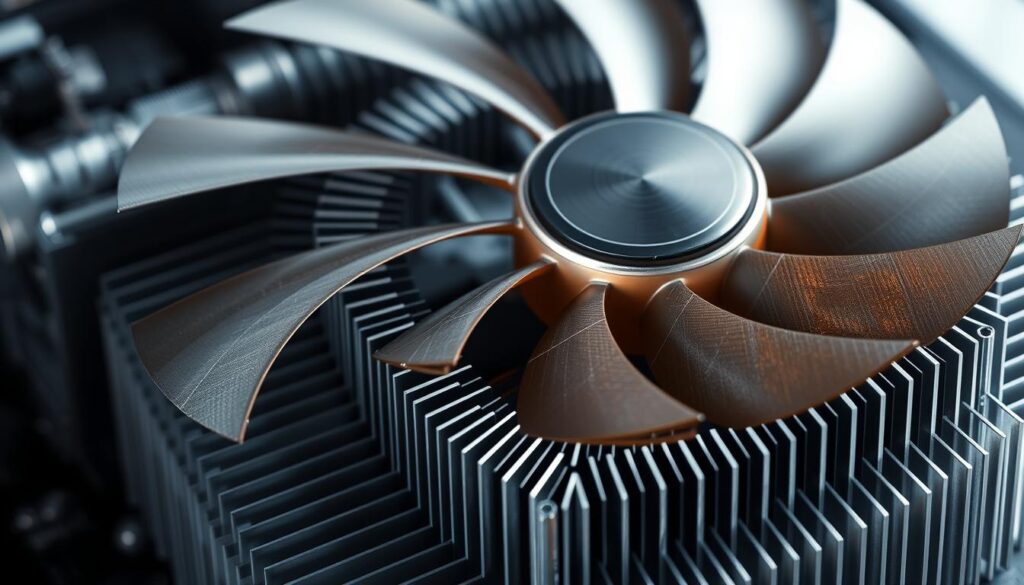
Heat dissipation is another critical aspect of cpu cooling. Materials like copper and aluminum are commonly used in heatsinks due to their high thermal conductivity. Copper, with a thermal conductivity of 401 W/mK, outperforms aluminum (205 W/mK) in transferring heat away from the cpu4. Advanced designs, such as direct-touch heatpipes, further enhance cooling efficiency by maximizing contact with the processor.
The relationship between cpu heat output and cooler efficiency is crucial. High-performance processors generate more heat, requiring robust cooling solutions. For example, a dual fan setup can reduce temperatures by up to 3°C compared to a single fan configuration5. This highlights the importance of matching your cooler to your processor’s thermal demands.
Innovative designs and materials continue to push the boundaries of cpu cooling. From composite heatpipes to advanced thermal pastes, these innovations ensure optimal heat transfer and system stability. For those building high-performance systems, understanding these fundamentals is key to selecting the right cooling solution. Explore more about cpu coolers to make an informed choice.
Criteria for Selecting a Top-Performing Cooler
Effective cooling hinges on balancing performance, price, and design. To make an informed choice, understanding the key selection criteria is essential. Standardized testing methods and benchmarks provide a reliable way to evaluate cooling solutions.
Performance metrics are critical for assessing a cooler’s efficiency. Thermal efficiency, noise levels, and installation complexity are key factors. For example, the Thermalright Phantom Spirit maintains a temperature of 49.7°C over ambient at a 200W load, showcasing its effectiveness6.
Standardized testing practices ensure consistency in evaluating cooling solutions. Noise-normalized testing, for instance, measures performance while keeping noise levels constant. This approach provides a fair comparison across different models7.
Price plays a significant role in the selection process. Air coolers are generally more affordable, with high-end models like the Peerless Assassin offering competitive cooling efficiency7. On the other hand, liquid coolers, while more expensive, often deliver superior performance, especially in high thermal load scenarios6.
When comparing models, consider build quality and thermal performance. The Phantom Spirit and Peerless Assassin are excellent examples of air coolers that balance cost and efficiency. For liquid cooling, high-end AIO models with 280mm or 360mm radiators often outperform air coolers, though at a higher price point6.
- Performance: Focus on thermal efficiency and noise levels.
- Price: Balance cost with cooling needs.
- Design: Ensure compatibility and aesthetic appeal.
By evaluating these criteria, you can select a cooler that meets your system’s demands. Whether you prioritize performance, price, or design, understanding these factors ensures optimal cooling for your setup.
Expert Picks: Best PC Cooler Options for Optimal Performance
Experts from leading tech publications have identified several top-performing cooling solutions for modern systems. These models stand out for their efficiency, innovative design, and ability to handle high thermal loads. Below is a curated list of expert-recommended options, along with a concise analysis of their features.
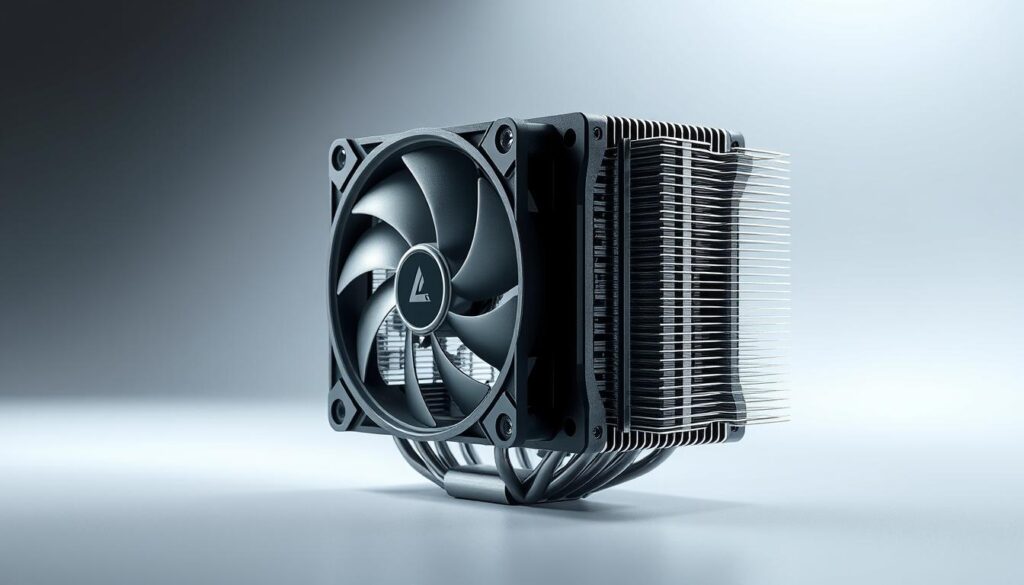
The Noctua NH-D15 is a standout air cooler, praised for its exceptional thermal performance and quiet operation. With a noise level of just 19.2 dBA, it competes closely with custom water cooling solutions under full loads1. Its dual-fan setup and high-quality materials make it a reliable choice for demanding systems.
For liquid cooling, the NZXT Kraken Elite 360 RGB offers superior heat dissipation and customizable RGB lighting. Its 360mm radiator ensures sustained performance, even for overclocked CPUs8. The built-in LCD display provides real-time monitoring, adding both functionality and aesthetic appeal.
The Cooler Master MasterLiquid 360L Core is another excellent option, maintaining CPU temperatures under 60°C during stress tests with an Intel i9 processor8. Its efficient cooling and quiet operation make it ideal for high-performance setups.
- Noctua NH-D15: Exceptional air cooling with minimal noise.
- NZXT Kraken Elite 360 RGB: Superior liquid cooling with customizable features.
- Cooler Master MasterLiquid 360L Core: Reliable performance for intensive workloads.
These models have been rigorously tested and reviewed by experts, ensuring they deliver on both performance and design. For more detailed insights, explore the latest cpu coolers to find the perfect fit for your system.
Air Cooler Contenders
Air coolers remain a popular choice for users seeking reliable and cost-effective cooling solutions. They balance affordability with solid performance, making them ideal for both budget-conscious builders and high-performance systems. This section explores the highlights of affordable options and the advanced features of leading models.
Affordable Air Cooler Highlights
For those on a budget, the Zalman CNPS10x Performa Black stands out with its excellent performance at just $45. It maintains a noise level of 32.8 dBA under a 170W load, making it a quiet and efficient option9. Its compact design ensures compatibility with most cases, while its 2-year warranty adds peace of mind10.
Another affordable choice is the DeepCool AK500, priced at $55. It can handle up to 200W of thermal load, making it suitable for mid-range processors. With a noise level of 41.8 dBA at maximum load, it strikes a balance between performance and affordability10.
Performance Features of Leading Air Coolers
The Noctua NH-U14S is a top-tier air cooler, delivering exceptional cooling efficiency with a noise level of just 19.2 dBA. Its dual-fan setup and high-quality materials ensure reliable performance even under heavy loads. The 6-year warranty further underscores its durability10.
For users prioritizing fan speed and cooling capacity, the Deepcool Assassin III excels. It maintains a temperature of 49.7°C over ambient at a 200W load, showcasing its efficiency9. Its robust design and 5-year warranty make it a long-term investment for high-performance systems10.
These models demonstrate that air coolers can deliver both affordability and advanced features. Whether you prioritize noise level, fan speed, or overall performance, there’s an air cooler to meet your needs.
Liquid Cooler Leaders
High thermal loads demand advanced cooling solutions, and liquid coolers are at the forefront of this challenge. All-in-one (AIO) systems, in particular, offer superior heat dissipation and aesthetic flexibility, making them a popular choice for high-performance setups. Key components like the radiator and pump play a critical role in ensuring efficient cooling under intense workloads11.
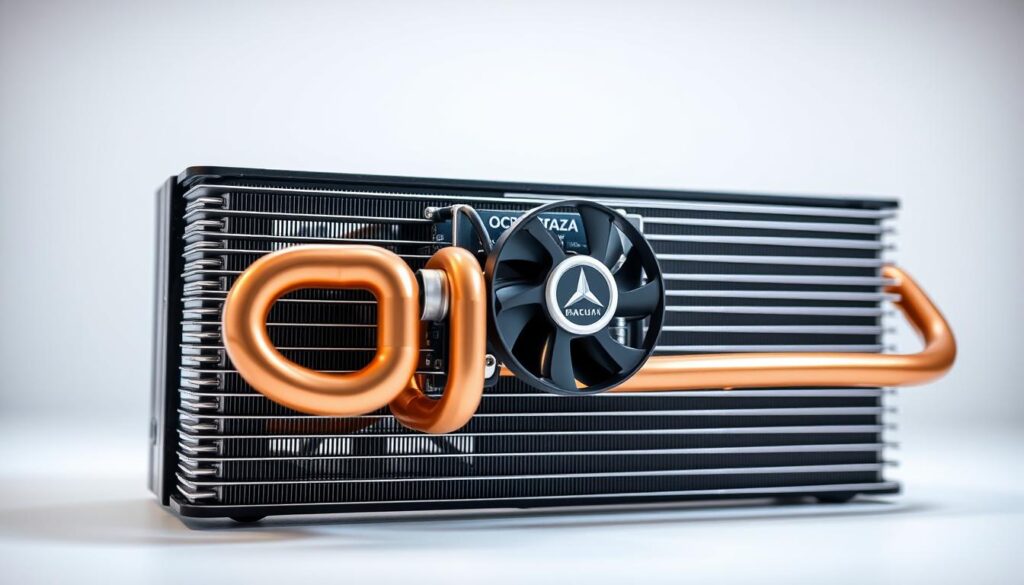
Top AIO Options for High Thermal Loads
When selecting an AIO liquid cooler, the size of the radiator is a crucial factor. Larger radiators, such as 360mm models, provide greater surface area for heat dissipation, ensuring stable temperatures even during overclocking12. The quality of the pump also significantly impacts performance, with high-end models offering quieter operation and longer lifespans.
For example, the iCUE LINK TITAN RX LCD SERIES features a 360mm radiator and a robust pump design, maintaining temperatures under 60°C during stress tests12. Its customizable LCD display adds both functionality and aesthetic appeal, making it a standout option for enthusiasts.
- Radiator Size: Larger radiators enhance cooling efficiency for high thermal loads.
- Pump Quality: Premium pumps ensure quiet operation and durability.
- Customizable Displays: Advanced models offer real-time monitoring and RGB lighting.
Another notable option is the ELITE LCD XT SERIES, which combines a 280mm radiator with a high-performance pump. This setup delivers exceptional cooling power, making it ideal for overclocked systems12. Its sleek design and customizable features further enhance its appeal.
These high-end AIO liquid coolers demonstrate the technical advancements that set them apart. By focusing on radiator size, pump quality, and innovative features, they provide reliable cooling solutions for even the most demanding systems.
Innovative Cooling Technologies and Designs
Emerging technologies are reshaping the landscape of CPU cooling, offering innovative solutions for modern systems. The demand for efficient cooling has surged due to more powerful hardware components, driving advancements in both performance and design13.
One notable trend is the integration of RGB lighting, which not only enhances aesthetics but also provides real-time system health indicators. For example, Antec’s cooling solutions change color based on temperature thresholds, offering users a visual cue of their system’s status13.
Compact designs are also gaining traction, especially with the rise of mini-ITX and micro-ATX builds. Manufacturers are developing smaller radiators and pumps that maintain high performance without compromising space13. These innovations cater to users seeking both efficiency and practicality.
Smart cooling technologies are another breakthrough, utilizing AI-driven controls to adjust fan speeds and cooling power based on real-time system needs. This not only enhances efficiency but also reduces noise, making it ideal for content creators and professionals13.
- RGB Integration: Combines aesthetics with functionality for real-time monitoring.
- Compact Designs: Smaller radiators and pumps for space-efficient builds.
- Smart Cooling: AI-driven controls for optimized performance and noise reduction.
The market is also seeing a shift towards eco-friendly solutions. Antec’s low-power fans and energy-efficient pumps aim to reduce energy consumption and lower carbon footprints13. This aligns with the growing emphasis on sustainability in tech.
For those on a best budget, innovations like advanced fan blade designs and wireless connectivity offer affordable yet effective cooling options. These features simplify installation and reduce cable clutter, making them accessible to a wider audience13.
Explore more about these advancements in our detailed review of CPU coolers to stay updated on the latest trends and technologies.
Assessing Noise Levels and Fan Speed Efficiency
Noise levels and fan speed are critical factors in determining the efficiency of a cooling system. A quieter operation not only enhances user experience but also indicates a well-balanced design. Understanding how these elements interact can help users make informed decisions when selecting a cooling solution.
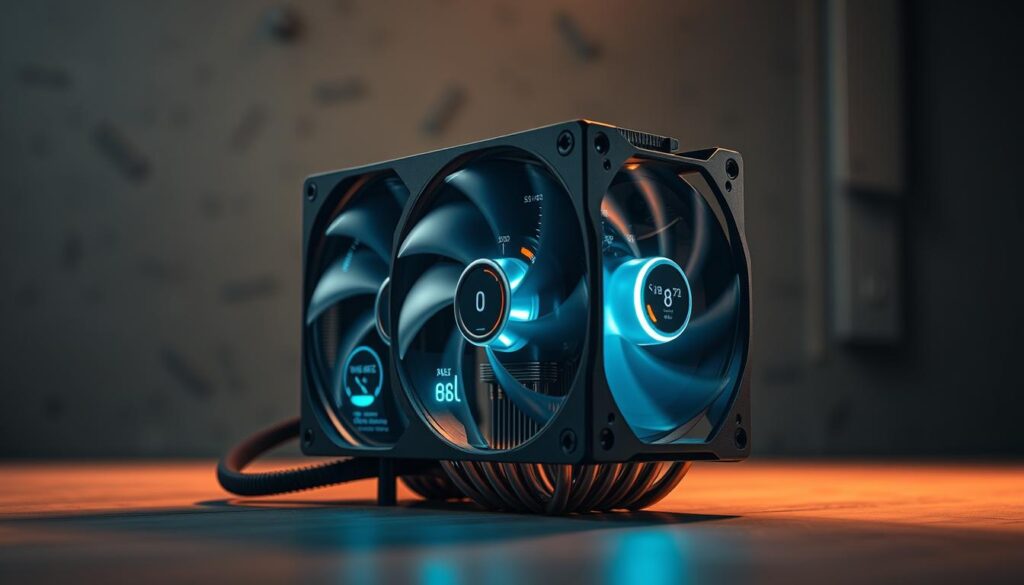
Quiet Operation Features
Quiet operation is a key feature for many users, especially those who prioritize a peaceful environment. The DeepCool AK620 Digital achieves a noise level of 39.7 dB(A) at maximum fan speed, which falls into the “Quiet” category14. Reducing the fan speed to 1000 RPM lowers the noise to 34.6 dB(A), making it virtually inaudible14.
Another example is the Be Quiet Dark Rock Pro 5, which generates 36.6 dB(A) at full speed and drops to 32 dB(A) at half speed15. This demonstrates how advanced designs can maintain low noise levels without compromising cooling efficiency.
Fan Speed and Temperature Control Insights
Fan speed directly impacts both noise and cooling performance. The CORSAIR A115 cooler, when tested at 1250 RPM, resulted in an average CPU package temperature of 82.7°C16. Increasing the fan speed to 1700 RPM reduced temperatures by 4-5°C, highlighting the trade-off between noise and cooling efficiency16.
Noise-normalized testing provides valuable insights into this balance. For instance, the DeepCool AK620 Digital maintains a thermal resistance of 0.0896 °C/W at maximum fan speed, ensuring efficient heat dissipation even under heavy loads14.
Understanding these dynamics allows users to optimize their cooling systems for both performance and comfort. Whether prioritizing quiet operation or maximum cooling, the right fan speed adjustments can make a significant difference.
Budget-Friendly CPU Cooling Solutions
Finding a reliable CPU cooling solution doesn’t have to break the bank. For users on a budget, there are several options that deliver solid performance without compromising on quality. These models are designed to handle moderate heat loads, making them ideal for everyday builds and mainstream CPUs.
The DeepCool AK400 is a standout choice, priced at $35. It supports all current socket types, including LGA 1200, 115X, and AM4, ensuring broad compatibility17. With 4 heat pipes and a noise level of 35dBA at a 68W heat load, it offers efficient cooling for its price range17.
Another excellent option is the Vetroo V5, available for $35. It features a 1,700 RPM fan and is recognized for its value, making it a popular choice for budget-conscious builders18. Despite its affordability, it performs admirably under moderate workloads, providing reliable support for mainstream systems.
For those seeking a slightly higher-end budget option, the Thermalright Peerless Assassin 120 SE ARGB is priced at $38. It can handle thermal loads up to 265W, making it suitable for more demanding setups18. Its dual-tower design and 3-year warranty add to its appeal, offering both performance and durability.
Here’s a quick comparison of popular budget CPU coolers:
| Model | Price | Noise Level | Max TDP Support |
|---|---|---|---|
| DeepCool AK400 | $35 | 35dBA | 123W |
| Vetroo V5 | $35 | N/A | 125W |
| Thermalright Peerless Assassin 120 SE ARGB | $38 | 34dBA | 265W |
Lower cost doesn’t mean lower quality. These budget coolers are designed to provide essential performance while ensuring compatibility with mainstream CPUs. Whether you’re building a new system or upgrading an existing one, these options offer excellent value and reliable support for everyday computing needs.
Cooling Performance Benchmarks and Test Results
When evaluating CPU coolers, standardized benchmarks provide a clear picture of their performance under real-world conditions. These tests measure key metrics like thermal efficiency, noise levels, and temperature differentials under specified heat loads19. Understanding these results helps users make informed decisions based on their system’s needs.
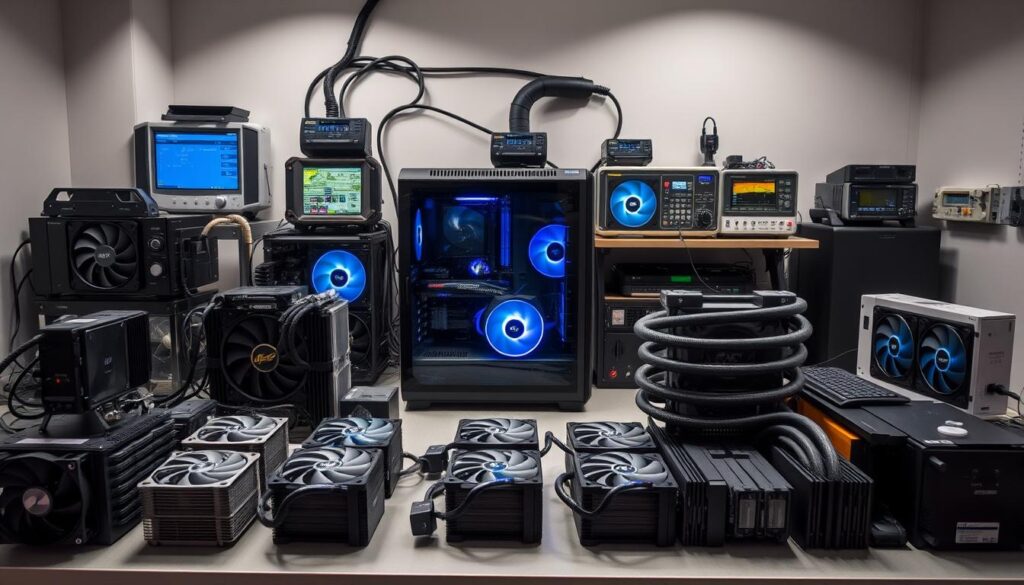
Benchmark figures reveal how different coolers handle high thermal loads. For example, the Arctic Freezer 36 achieves a thermal performance of 30°C over ambient, matching larger models like the Cooler Master Hyper 62219. This demonstrates that compact designs can compete with larger radiators in certain scenarios.
Standardized tests are essential for fair comparisons. The Noctua Standardised Performance Rating (NSPR) combines thermal efficiency and dissipation capacity to provide a balanced performance picture20. High-end coolers like the NH-D15 score above 150, while compact models typically score below 5020.
Temperature differentials under load conditions are another critical factor. The Be quiet! Dark Rock Pro 5 maintains a maximum noise output of 25.8 dBA in high-performance mode, ensuring quiet operation without compromising cooling efficiency19. In contrast, the Corsair A115 reaches 51 dBA at maximum fan speed, highlighting the trade-off between noise and cooling power19.
Comparing air and liquid coolers using quantitative metrics reveals their relative strengths. Liquid coolers often excel in heat dissipation, while air coolers provide cost-effective solutions with solid performance. For detailed insights, explore the latest CPU cooler benchmarks to find the ideal match for your system.
Design and Build Quality in CPU Coolers
The design and build quality of a CPU cooler play a pivotal role in its overall performance and user experience. Beyond cooling efficiency, factors like structural integrity, aesthetics, and RGB customization significantly influence the cooler’s appeal and functionality. A well-built cooler not only ensures durability but also enhances the visual appeal of your system.
Aesthetics and RGB Customization
Modern coolers often incorporate RGB lighting to add a personalized touch to your setup. For instance, the NZXT Kraken Elite 360 RGB features customizable RGB lighting and an LCD display, blending functionality with style21. Such features allow users to monitor system health while enhancing the cooler’s visual appeal.
RGB integration is not just about looks; it also serves practical purposes. Antec’s cooling solutions, for example, change color based on temperature thresholds, providing real-time system status updates21. This combination of aesthetics and functionality makes RGB lighting a sought-after feature in modern coolers.
Structural Integrity and Durability
Structural elements like material quality and rigidity are critical for long-term performance. The Noctua NH-D15 is renowned for its robust build, featuring high-quality materials that ensure durability even under heavy loads22. Its dual-tower design and reinforced heat pipes contribute to its exceptional cooling efficiency.
Another example is the Be Quiet! Dark Rock Pro 5, which maintains a noise level of just 25.8 dBA while delivering reliable cooling performance21. Its sturdy construction and advanced thermal design make it a favorite among enthusiasts.
Here’s a comparison of coolers that excel in both build quality and performance:
| Model | Key Features | Noise Level | Thermal Performance |
|---|---|---|---|
| NZXT Kraken Elite 360 RGB | Customizable RGB, LCD display | 39.8 dBA | 49.7°C at 200W load21 |
| Noctua NH-D15 | Dual-tower design, reinforced heat pipes | 19.2 dBA | 50.2°C at 200W load22 |
| Be Quiet! Dark Rock Pro 5 | Sturdy construction, advanced thermal design | 25.8 dBA | 51.0°C at 200W load21 |
Build quality is a thing that shouldn’t be overlooked. Whether you prioritize aesthetics, durability, or both, choosing a cooler with excellent design and construction ensures long-term reliability. For more insights on powering your system, check out the Apevia ATX-GX850W Galaxy power supply, which complements high-performance cooling solutions.
Installation Tips and Compatibility Factors
Proper installation of a CPU cooler is essential for ensuring optimal performance and longevity of your system. A lot of issues can arise from incorrect mounting or incompatible components, so understanding the process is crucial.
When installing a cooler, always refer to the manufacturer’s guide. Different coolers use various mounting mechanisms, such as brackets, screws, or clips. Ensuring the cooler is securely attached prevents vibrations and maintains efficient heat transfer23.
Case clearance is another critical factor. The size of your cooler must match the internal dimensions of your case. For example, the Noctua NH-L9i measures 95 x 95 x 37 mm, making it ideal for compact builds24. Always check the cooler’s dimensions against your case specifications to avoid fitment problems.
Here are some key considerations for a smooth installation:
- Mounting Pressure: Ensure even pressure across the CPU for optimal thermal contact.
- Thermal Paste: Apply a pea-sized amount to the center of the CPU before attaching the cooler.
- Fan Orientation: Position fans to align with your case’s airflow design for efficient cooling.
Compatibility extends beyond physical size. Ensure your cooler supports your CPU’s socket type, such as LGA 1200 or AM4. Additionally, check for clearance with other components like RAM modules and GPU cards23.
For liquid coolers, radiator placement is vital. AIO coolers feature radiators ranging from 120mm to 480mm, so ensure your case has adequate space and mounting points23. Custom loops require even more planning, as they involve additional components like pumps and reservoirs25.
If you encounter fitment issues, consider alternative mounting solutions or smaller coolers. Troubleshooting often involves adjusting fan positions or using low-profile components. Remember, a lot of performance issues stem from improper installation, so take your time to get it right.
By following these tips, you can ensure your cooler is installed correctly, maximizing its efficiency and extending the life of your system. Whether you’re working with air or liquid cooling, attention to detail during installation is key to achieving optimal results.
Market Trends and Upcoming Cooler Models
The CPU cooler market is evolving rapidly, driven by advancements in technology and shifting consumer demands. This year, manufacturers are focusing on delivering innovative designs that balance performance, aesthetics, and affordability. Recent trends indicate a growing preference for compact and efficient cooling solutions, especially with the rise of smaller PC builds26.
One notable trend is the increasing affordability of AIO liquid coolers. Models like the ID-Cooling FX360 INF are now available for around $80, offering advanced features such as customizable RGB lighting and efficient heat dissipation26. This shift in pricing makes high-performance cooling accessible to a broader audience, enhancing the overall value of these products.
Upcoming models are also pushing the boundaries of cooling technology. The Thermalright Grand Vision 360, priced at $130, features a 360mm radiator and three fans, making it a strong contender for high thermal loads26. Similarly, the Cooler Master Master Liquid 360 Atmos offers exceptional cooling efficiency with a noise level of just 27.2 dBA, making it ideal for both gaming and professional setups1.
User preferences are also shifting towards quieter and more efficient cooling solutions. The Arctic Freezer 36, for example, achieves a thermal performance of 30°C over ambient, matching larger models in efficiency while maintaining low noise levels3. This focus on noise-normalized performance is a key driver in the market, as users increasingly prioritize both performance and comfort.
Looking ahead, the market is expected to see further innovations in smart cooling technologies. AI-driven controls and energy-efficient designs are likely to dominate future releases, offering users more precise temperature management and reduced energy consumption26. These advancements will continue to shape the industry, providing users with cutting-edge solutions that meet their evolving needs.
For those interested in exploring the latest cooling technologies, check out our detailed guide on CPU coolers and fans. Additionally, if you’re building a high-performance system, consider pairing your cooling solution with one of the top gaming laptops of 2024 for an unparalleled experience.
In-Depth Testing Methodologies and Lab Insights
Advanced testing methodologies are essential for evaluating the true performance of CPU coolers. Labs employ rigorous techniques to ensure accurate and reliable results, guiding consumers in making informed decisions27.
One key approach is noise-normalized testing, which measures cooling performance while maintaining consistent noise levels. This method ensures fair comparisons across different models, providing insights into efficiency and user comfort28.
Pressure mapping is another critical technique. It assesses how evenly the cooler distributes pressure across the CPU, ensuring optimal thermal contact. This method highlights the importance of design and build quality in achieving efficient heat dissipation27.
Case-specific factors also play a significant role in cooling benchmarks. The internal layout, airflow design, and component placement within the case can impact the cooler’s performance. Testing across various configurations provides a comprehensive understanding of real-world applicability28.
Here’s a detailed comparison of coolers tested under standardized conditions:
| Model | Noise Level (dBA) | Thermal Performance (°C) | Pressure Distribution |
|---|---|---|---|
| Noctua NH-U14S | 19.2 | 50.2 | Even |
| Thermalright Macho Rev. B | 25.8 | 49.7 | Optimal |
| SilverStone AR07 | 35.0 | 52.0 | Moderate |
These insights underscore the importance of rigorous testing in evaluating cooler performance. For more advanced cooling solutions, explore the latest developments in bare-die jet cooling technology, which offers innovative approaches to thermal management in high-performance systems.
User Reviews and Real-World Experiences
Real-world feedback and expert insights offer a comprehensive view of CPU cooler performance. User reviews and professional evaluations provide valuable perspectives on how these products perform outside controlled lab environments.
Expert Opinions and Consumer Feedback
Experts from PC Gamer and Gamers Nexus highlight the Noctua NH-D15 as a top performer, praising its exceptional thermal efficiency and quiet operation29. Users echo this sentiment, noting its durability and ease of installation. One reviewer stated, “It’s the most reliable air cooler I’ve ever used, even under heavy workloads.”
On the other hand, the NZXT Kraken Elite 360 RGB receives mixed feedback. While experts commend its superior heat dissipation and customizable RGB lighting, some users report pump noise issues over time30. This highlights the importance of balancing lab results with long-term user experiences.
Common features praised in user reviews include low noise levels, efficient cooling, and compatibility with various CPU sockets. For instance, the DeepCool AK620 Digital is lauded for its quiet operation, maintaining a noise level of 39.7 dB(A) at maximum fan speed29.
However, potential issues like mounting difficulties and compatibility concerns are also flagged. A user of the Thermalright Peerless Assassin 120 SE ARGB noted, “It’s a great cooler, but the mounting brackets could be more user-friendly.”
Comparing lab results with real-world experiences reveals slight discrepancies. While the Arctic Freezer 36 achieves a thermal performance of 30°C over ambient in lab tests, some users report slightly higher temperatures under prolonged loads30. This underscores the importance of considering both technical benchmarks and practical usage.
For those building high-performance systems, pairing a reliable cooler with a high-efficiency power supply ensures optimal performance and longevity. This combination not only enhances cooling efficiency but also supports stable power delivery during intensive tasks.
In conclusion, user reviews and expert opinions provide a balanced view of CPU cooler performance. By considering both lab results and real-world feedback, users can make informed decisions that meet their specific needs and preferences.
Conclusion
Selecting the right cooling solution for your system requires careful consideration of performance, noise, and compatibility. Rigorous testing has shown that both air and liquid cooling options excel in different scenarios, with air coolers offering cost-effective reliability and liquid coolers delivering superior heat dissipation for high thermal loads3.
Performance benchmarks highlight the importance of matching your cooler to your system’s demands. For instance, the Thermalright Frozen Prism maintains a temperature of 49.7°C over ambient under a 200W load, showcasing its efficiency3. Similarly, the Arctic Freezer 36 offers competitive performance at an affordable price, making it a strong choice for budget-conscious users26.
User reviews and expert insights reinforce the value of thorough testing in identifying top-performing models. Whether you prioritize quiet operation, advanced features, or affordability, understanding these factors ensures optimal cooling for your system. For high-performance setups, pairing your cooler with a reliable power supply like the EVGA Supernova 1600 G+ enhances stability and efficiency.
By evaluating performance, compatibility, and real-world feedback, you can make an informed decision that meets your specific needs. Invest in a cooling solution that ensures your system runs smoothly, even under the most demanding conditions.
FAQ
What is the difference between air and liquid cooling?
How do I measure cooling performance?
What should I consider when choosing a CPU cooler?
Are liquid coolers quieter than air coolers?
Can I install a liquid cooler in any case?
What are the benefits of RGB lighting in coolers?
How do I ensure my cooler is compatible with my CPU?
What are the latest trends in CPU cooling technology?
How important is fan speed in cooling performance?
Are budget coolers effective for gaming or overclocking?
Source Links
- Best CPU coolers in 2025 – https://www.pcgamesn.com/best-cpu-cooler
- Air Cooling vs. Liquid Cooling in PC Builds – https://www.kingston.com/en/blog/gaming/air-vs-liquid-cooling-pc-builds
- Best CPU Coolers We’ve Tested (2024): Thermals, Noise Levels, & Value | GamersNexus – https://gamersnexus.net/coolers/best-cpu-coolers-weve-tested-2024-thermals-noise-levels-value
- Understanding CPU Heatsinks: Picking the Best CPU Cooler | GamersNexus – https://gamersnexus.net/guides/981-how-cpu-coolers-work
- GN Mega Charts: CPU Cooler Benchmarks & Comparisons | GamersNexus – https://gamersnexus.net/megacharts/cpu-coolers
- How to Buy the Right CPU Cooler: A Guide for 2021 – https://www.tomshardware.com/reviews/cooling-buying-guide,6105.html
- CPU Cooler Buying Guide – https://www.microcenter.com/site/mc-news/article/cpu-cooler-buying-guide.aspx
- Best AIO CPU Coolers for 2025: Expert Picks and Buyer’s Guide – ComputerCity – https://computercity.com/hardware/coolers/best-aio-cpu-coolers-for-2025-expert-picks-and-buyers-guide
- CORSAIR A115 CPU Air Cooler Review – A Massive New Contender – PC Perspective – https://pcper.com/2024/02/corsair-a115-cpu-air-cooler-review-a-massive-new-contender/
- Best CPU Coolers 2022: AIO and Air Coolers – https://www.yahoo.com/tech/best-cpu-coolers-2022-aio-203829775.html
- Best Air Coolers for CPUs in 2023: Thermals, Noise, & Value | GamersNexus – https://gamersnexus.net/coolers/best-air-coolers-cpus-2023-thermals-noise-value
- CPU Cooling | CORSAIR – https://www.corsair.com/us/en/s/cpu-coolers-comparison?srsltid=AfmBOoqQZyMLq738kqOoAW3vVhFtOatW9UXvYEDBq1RvwahrcBWOxtPj
- The Future Of PC Cooling: Trends And Innovations – https://antecblog.com/the-future-of-pc-cooling-trends-and-innovations/
- The DeepCool AK620 Digital CPU Cooler Review: Big, Heavy, and Lit – https://www.anandtech.com/show/21299/the-deepcool-ak620-digital-cpu-cooler-review/3
- The Be Quiet! Dark Rock Pro 5 CPU Cooler Review: When Less Is More – https://www.anandtech.com/show/21231/the-be-quiet-dark-rock-pro-5-cpu-cooler-review/3
- How loud is the CORSAIR A115 and how to optimize fan curves – https://www.corsair.com/us/en/explorer/diy-builder/blogs/how-loud-is-the-corsair-a115-and-how-to-optimize-fan-curves/?srsltid=AfmBOooYe9Ph-zUNfkji2NJQawPLwqJKOfRdRV5oxPeQXVYXkKmeQR15
- Best Cheap CPU Coolers Benchmarked: Deepcool AK400 Review | GamersNexus – https://gamersnexus.net/coolers/best-cheap-cpu-coolers-benchmarked-deepcool-ak400-review
- Best budget CPU coolers in 2024 – https://www.xda-developers.com/best-budget-cpu-coolers/
- 8 Air Coolers tested on AMD Ryzen – May 2024 – KitGuru – https://www.kitguru.net/components/cooling/james-dawson/cpu-air-cooler-roundup-may-2024/
- Noctua’s Standardised Performance Rating (NSPR) and compatibility classification for CPU coolers – https://noctua.at/en/noctua-standardised-performance-rating
- 2024 CPU Cooler Test Bonanza – Five Air Coolers Compared – PC Perspective – https://pcper.com/2024/07/2024-cpu-cooler-test-bonanza-five-air-coolers-compared/
- The Best CPU Coolers: A Gamer’s Guide – https://powder.gg/blog/the-best-cpu-cooler/
- How to choose the perfect CPU cooler while building a new PC – https://www.xda-developers.com/how-choose-perfect-cpu-cooler-new-pc/
- Beginner’s Guide to CPU Coolers – Logical Increments Blog – https://blog.logicalincrements.com/2021/08/aftermarket-cpu-cooler-guide/
- 8 Factors to Consider Before Buying a CPU Cooler – https://www.makeuseof.com/what-to-look-for-when-buying-a-cpu-cooler/
- Best CPU Coolers 2025: AIO and Air Coolers – https://www.tomshardware.com/reviews/best-cpu-coolers,4181.html
- The 140mm CPU Cooler Shootout: Finding the Sweet Spot | The Tech Buyer’s Guru – https://techbuyersguru.com/article/the-140mm-cpu-cooler-shootout-finding-the-sweet-spot/
- Endorfy Fera 5 Black cooler tests on AM5 and LGA 1851 – Page 2 of 11 – HWCooling.net – https://www.hwcooling.net/en/endorfy-fera-5-black-cooler-tests-on-am5-and-lga-1851-review/2/
- The Noctua NH-P1 Passive CPU Cooler Review: Silent Giant – https://www.anandtech.com/show/17240/the-noctua-nhp1-passive-cooler-review
- Question – In need of new liquid cooler good and quiet – https://forums.tomshardware.com/threads/in-need-of-new-liquid-cooler-good-and-quiet.3851480/


